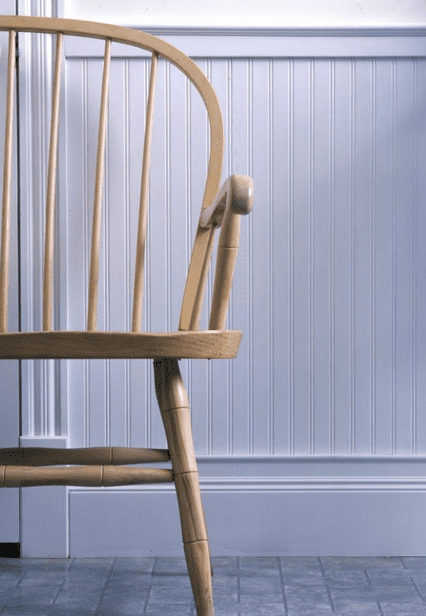Mouldings serve a practical purpose in construction.
The baseboard conceals the meeting of the floor and the all, allowing for different movement in each surface without revealing the gap. The crown does the same for the meeting of the wall and the ceiling. The casings cover the meeting of the door and windows and the walls. But much more, mouldings set the character of a room, and of a house. Classical or modern, Important Residence or humble abode, Victorian ornateness or Arts and Crafts simplicity, mouldings project the personality of a structure.
Typically, mouldings are wood, usually painted, sometime stained. There are plenty of catalogs of existing moulding profiles, and books that show traditional families (groupings of baseboard, crown, casings and other pieces that work well together, usually having a similar geometry). These are terrific starting points for designers and home owners. They can provide the final solution, or just a starting point for designing custom mouldings.
Using the same family of mouldings throughout a house is a great way for creating a consistent feel throughout, whether your starting from scratch, or tying a new addition into an existing home. But a few tweaks can greatly refine the design. Making the baseboard taller in the rooms with a taller ceiling gives a subtle nod to their grander height, making them feel a bit more “important”. Adding a larger crown to the main rooms, like the Living Room and Dining Room gives a nod to their prominence, and draws the eye to their proportions, while using a smaller crown (or none at all) in the smaller “back-of-house” spaces can also re-enforce this hierarchy.
Mouldings should relate to the scale of the room. The taller the ceiling, the taller the baseboard should be. I like to use 6” tall baseboards for the typical 8’-0” room, and 8” for a room with a 10’ ceiling, just as starting points. Nothing makes me sadder than seeing a grand, double-height entry with a puny 3” baseboard. Bumping up the baseboard height to 9 or 10” celebrates the boldness of these spaces, and gives them a more solid, more substantial appeal.
Think of casings almost as frames for artwork. Use a smaller casing for the less important doors, openings and windows. Let a larger casing celebrate a window overlooking a beautiful garden, or framing the interior view into the Living Room. Many casings can be found in several different sizes, making it easy to create a hierarchy with off the shelf pieces. A simple flat casing can make more celebratory with the addition of a back band.
Worried about the fussiness of all these mouldings? Don’t be. Moulding don’t have to be ornate affairs. There are plenty of simple, elegant, modern mouldings samples around. Craving a super sleek, moulding free look? Newer building technics and materials making this completely possible, but it takes planning and consideration. Baseboards can be recesses so they are flush with the finished wall. Drywall can make a clean return and window and door openings to eliminate casings, as well as the crown. But this modern look takes planning and design before construction begins. That effortless look takes effort to achieve.






